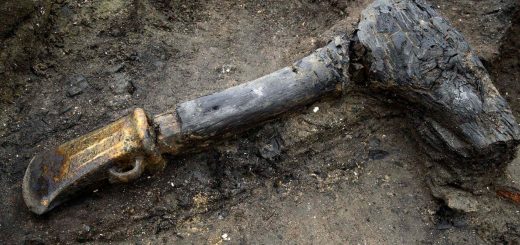Does this sculpted head show an ancient hunter-gatherer’s hairstyle?
A carved figure found in northern France, dated to 27,000 years ago, may reflect how hair was styled in a culture that disappeared during the last glacial maximum
By Taylor Mitchell Brown
8 September 2025
Carved figure of a face from the Amiens-Renancourt 1 site in France
Stephane Lancelot/Inrap
A miniature statue dating back 27,000 years from northern France may give us clues to how ancient hunter-gatherers of the time styled their hair.
The statuette was unearthed in 2021 from an open-air site about 140 kilometres north of Paris called Amiens-Renancourt 1, but has only just been described by scientists.
Read more
How our ancestors invented clothing and transformed it into fashion
It has long hair that appears to be braided with a gridded pattern, which could represent hair netting or a unique hairstyle. This differs from statuettes found across central and eastern Europe, where the hairstyle or headpiece is shorter and covers most of the head, says Olivier Touzé at the University of Liège in Belgium, who wasn’t involved in the study.
The statuette’s unique hairstyle may reflect the fashion of the time and area. “This could be a cultural particularity that would never have been highlighted other than through these rare human representations,” says team member Clément Paris at France’s National Institute of Preventive Archaeological Research.
Radiocarbon dating of rock layers at Amiens-Renancourt 1 suggests the figurine is around 27,000 years old, making it part of the Gravettian period, which lasted from 33,000 to 26,000 years ago across Europe. After this period, hunter-gatherer populations left north-western Europe for nearly 10 millennia due to the very cold and dry conditions of the last glacial maximum, says Touzé.


